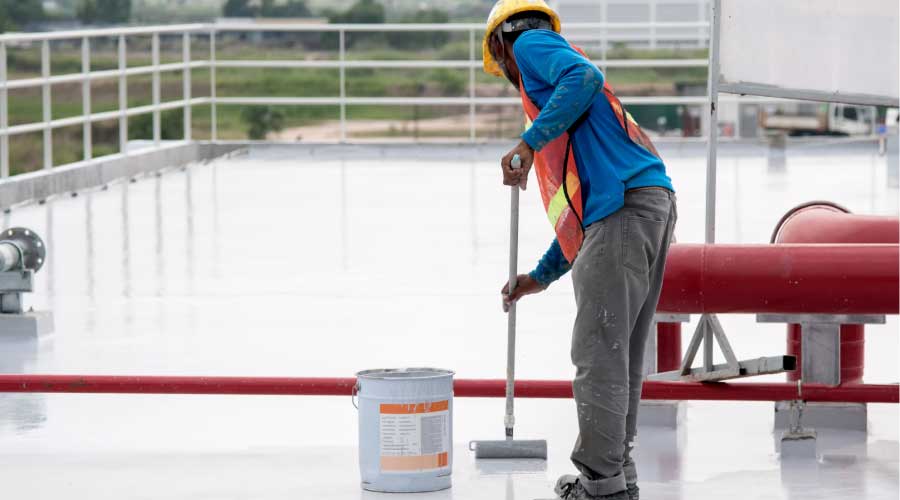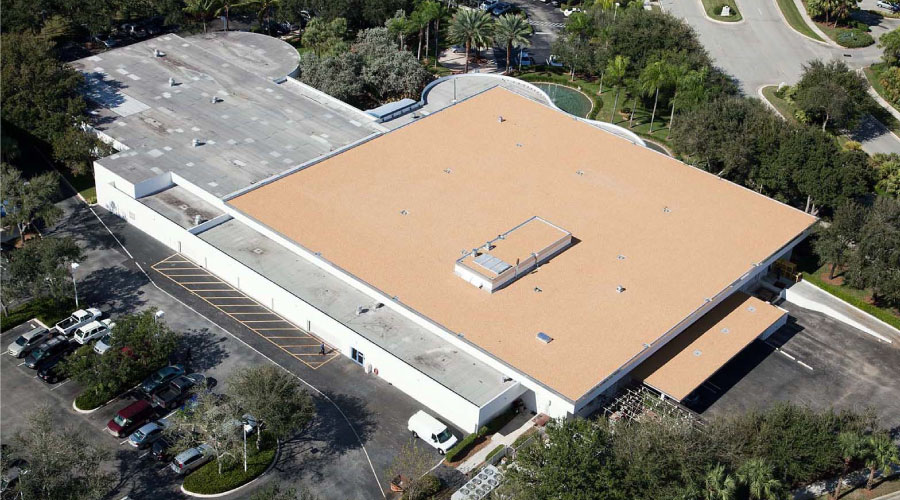Ultimate Goal of CEIR's RoofPoint System is to Guide All Phases of Roofing Projects
RoofPoint, which was developed in 2012, already has been applied to about 250 roofing projects, Hoff says. About 60 percent of the projects are re-roofing projects, and 40 percent are new construction, he adds. Initially, CEIR has focused primarily on reaching out and explaining the system to roofing contractors, more so than building owners. Of course, the ultimate goal is to have all parties involved in roofing design and construction understand and apply the RoofPoint system.
Among the buildings that have applied for the RoofPoint designation are some true showcases, such as the Target Center in Minneapolis. "But the great majority are relatively mundane," Hoff says. They're simply well-constructed and energy efficient, he says.
While a RoofPoint roof may be installed on a LEED facility, that's not a requirement, Kirby says. The goal has been for the two programs to mesh nicely, but they don't have to be used together. Generally, a LEED-certified building would qualify for RoofPoint, although the reverse isn't automatically true.
The RoofPoint rating system consists of a total of 24 possible points, distributed across four categories:
Energy management (6 possible points): In this category, roofing systems earn points by having high R values (which measures the resistance to heat flow), as well as daylighting and other features.
Materials and water management (6 possible points): Roofing systems earn points in this category in several ways, including the use of recycled content and by reducing roofing waste and scrap.
Durability/life cycle management and water management (9 possible points): This category includes the roof drainage design and the durability of the roof insulation system, as well as the roof's maintenance program.
Innovation in roofing (2 possible points): This category covers innovation in design as well as exemplary performance, and could include both innovative energy management features, as well as attributes that contribute to a better overall roof, such as more effective fall protection systems.
To earn the RoofPoint designation, a roofing system must earn at least 12 points total, distributed across each of the four categories. At least three must come from energy management, two from materials and water management, and four from durability/life cycle management.
To date, either Hoff or Kirby have personally reviewed each application. As the program grows, it's likely that a larger group of qualified examiners will be needed to assess the applications.
As the categories indicate, the RoofPoint criteria cover both energy efficiency and longevity. The focus on energy efficiency is self-explanatory; after all, that's the goal of the program. Roofing systems can gain points by having appropriate levels of insulation and adequate air barriers, among other features. At the same time, the focus on a roof's durability and longevity recognizes that a roof lasting, say, 20 years will require less energy overall than one that needs replacement every five or seven years, Kirby notes.
However, the RoofPoint program is not "system-specific," Hoff says. "A variety of commercial roofing systems can qualify," including single-ply, asphalt, and spray foam systems. "We think we provide a large number of options for building owners."
Similarly, it's not as though a roof must be white to qualify for the RoofPoint rating, Hoff notes, although he adds that many of the roofs are lighter-colored. Rather than focus solely on the color, RoofPoint breaks down the cool roofing credit into three sub-credits: net energy savings, peak energy demand reduction, and heat island mitigation.
Related Topics:














